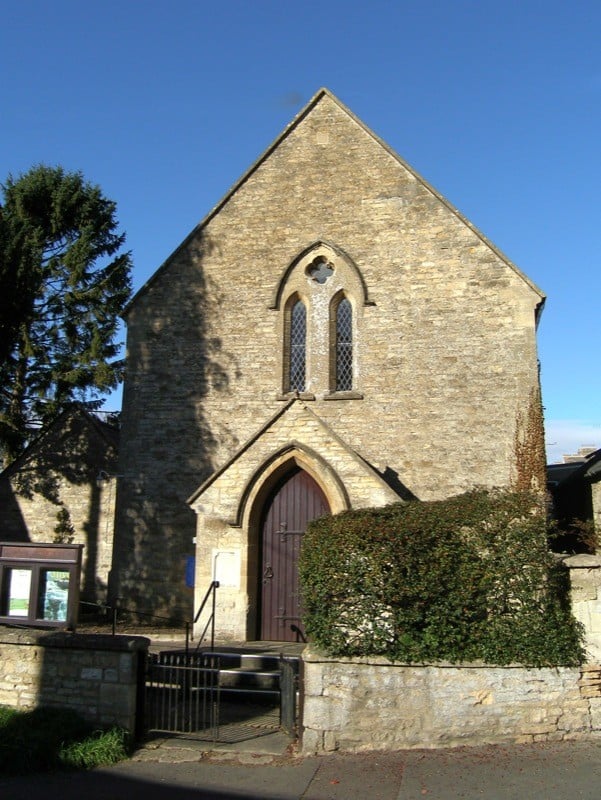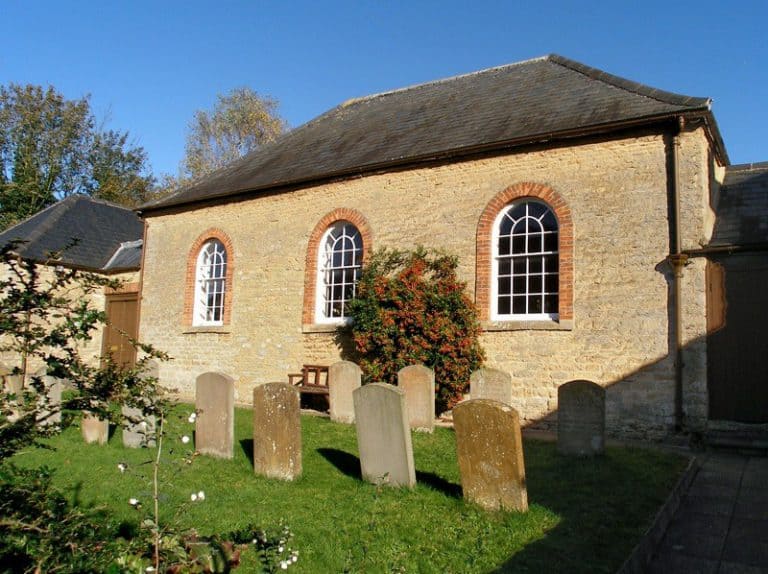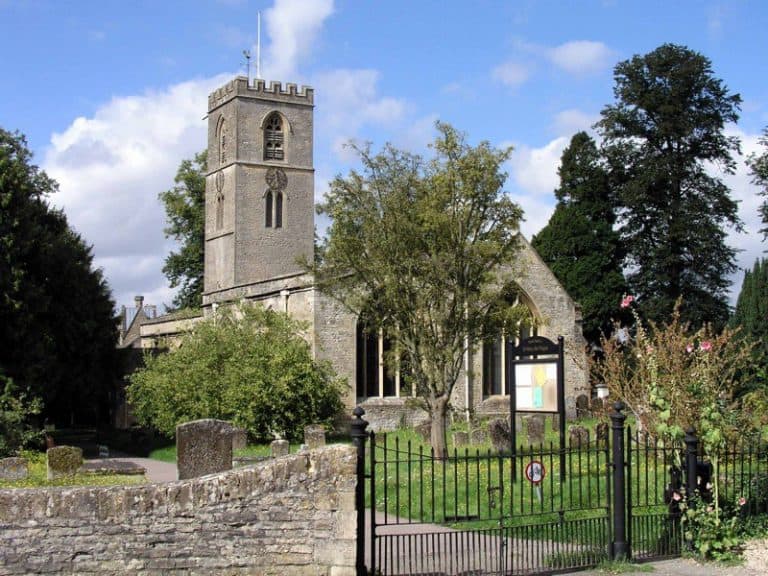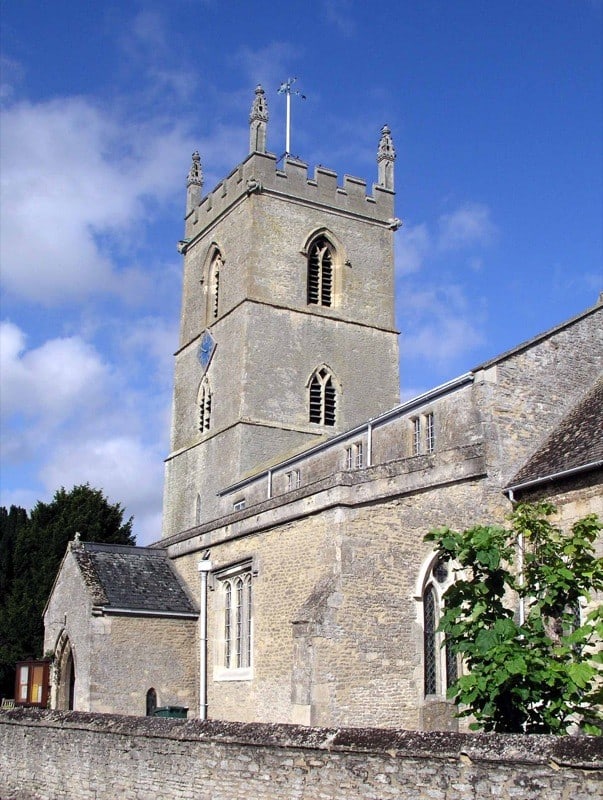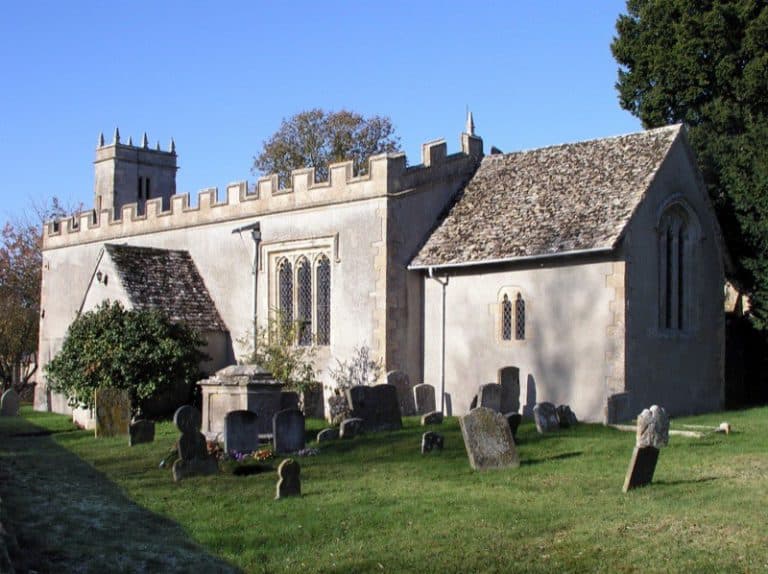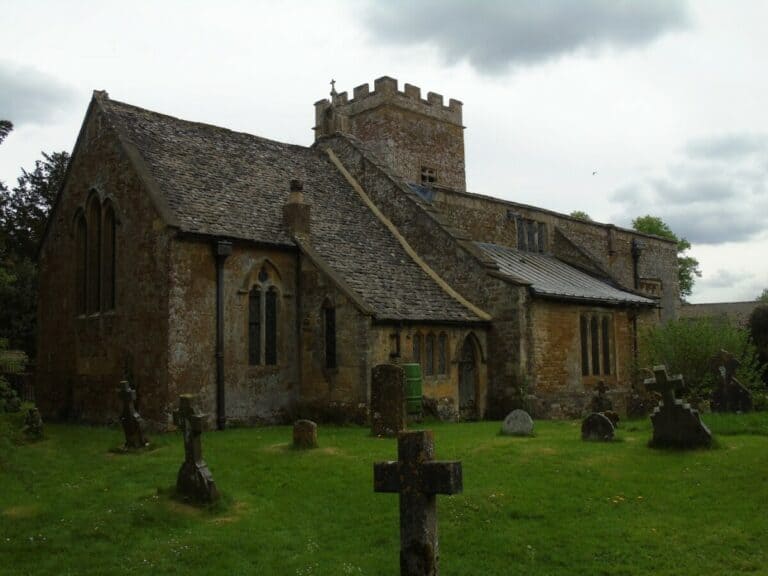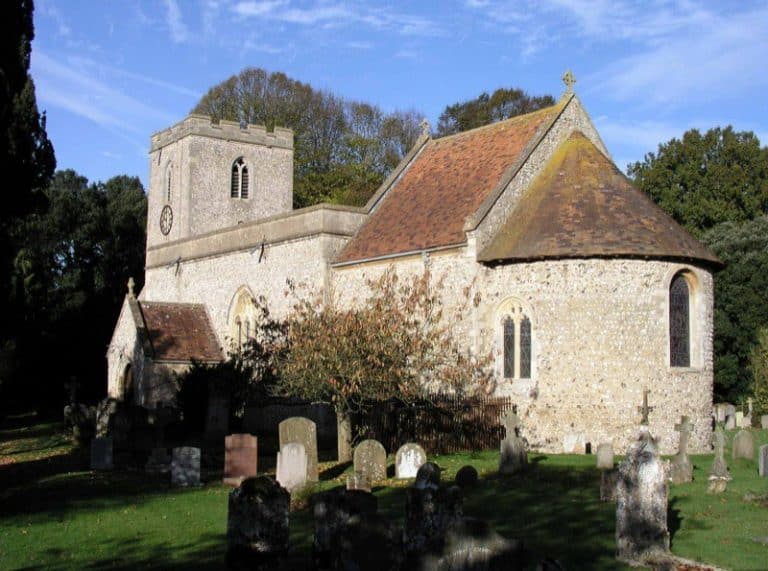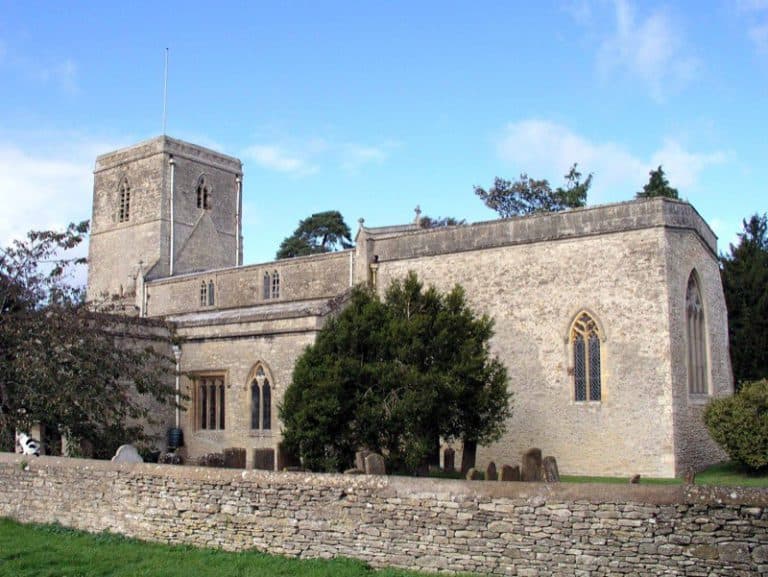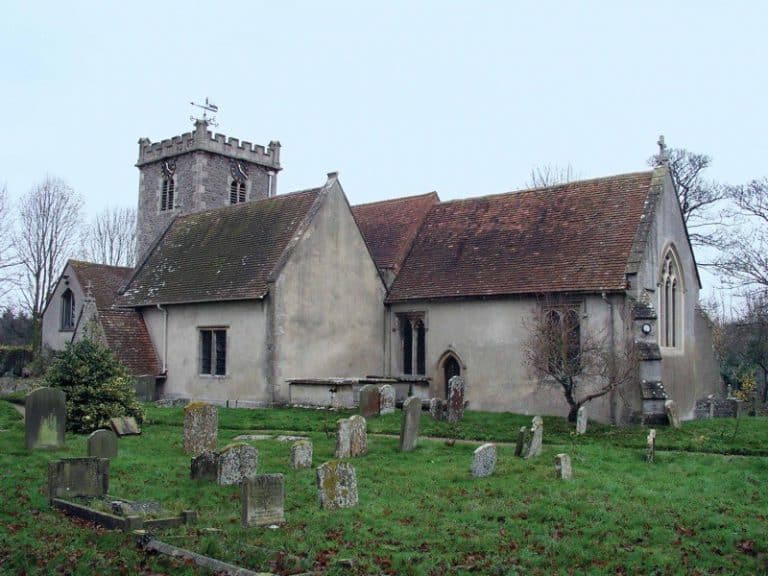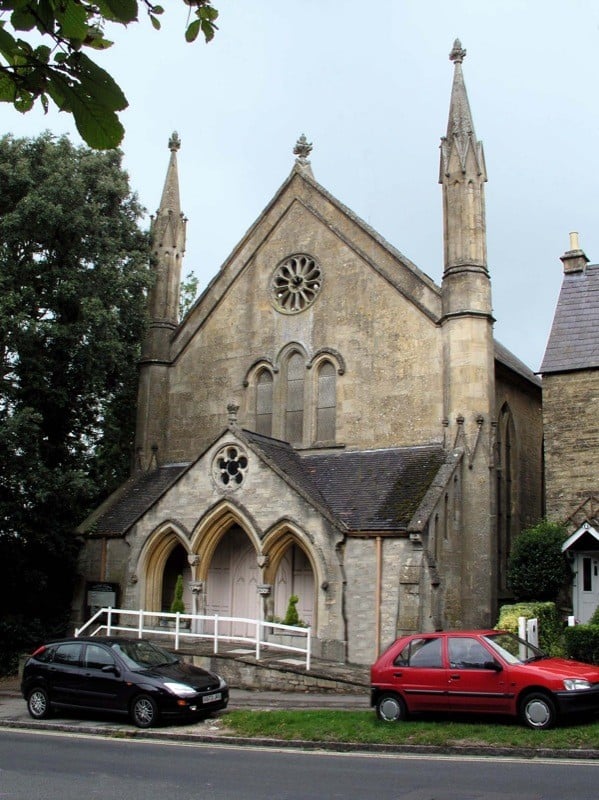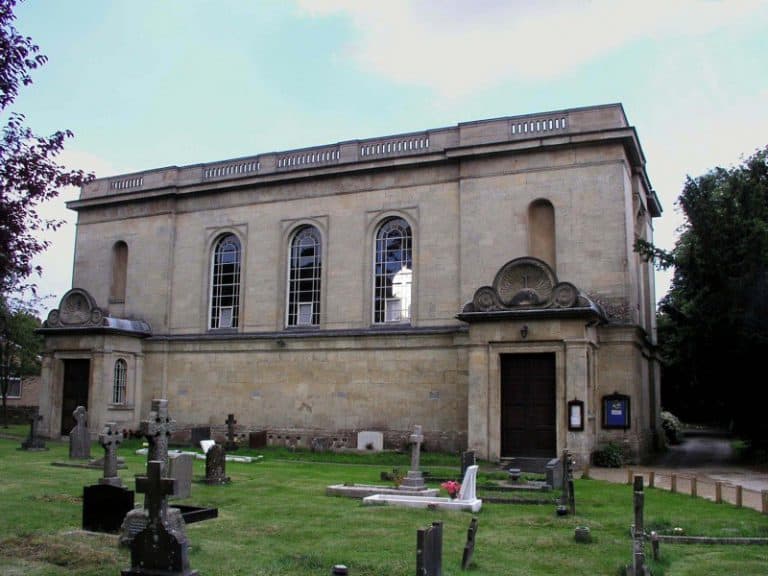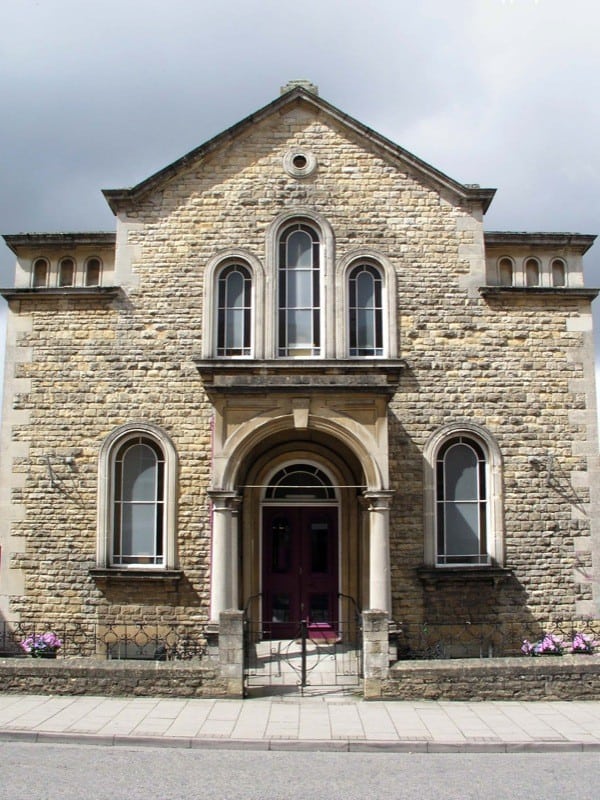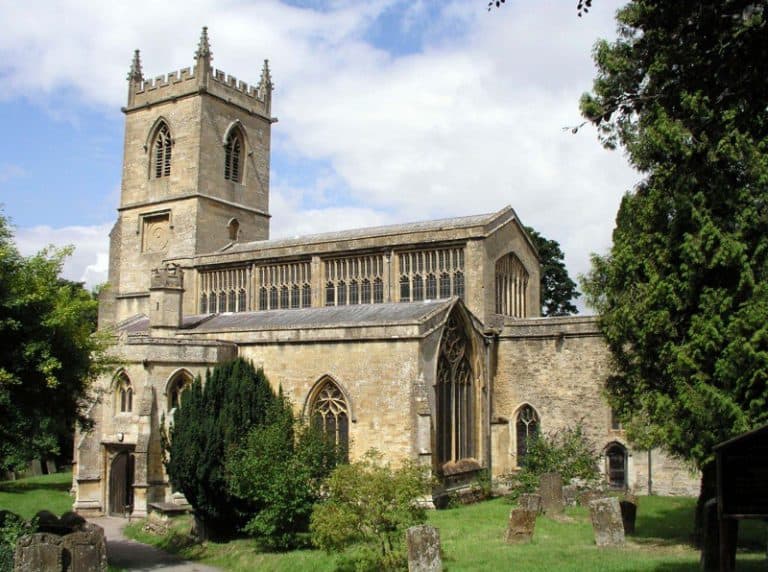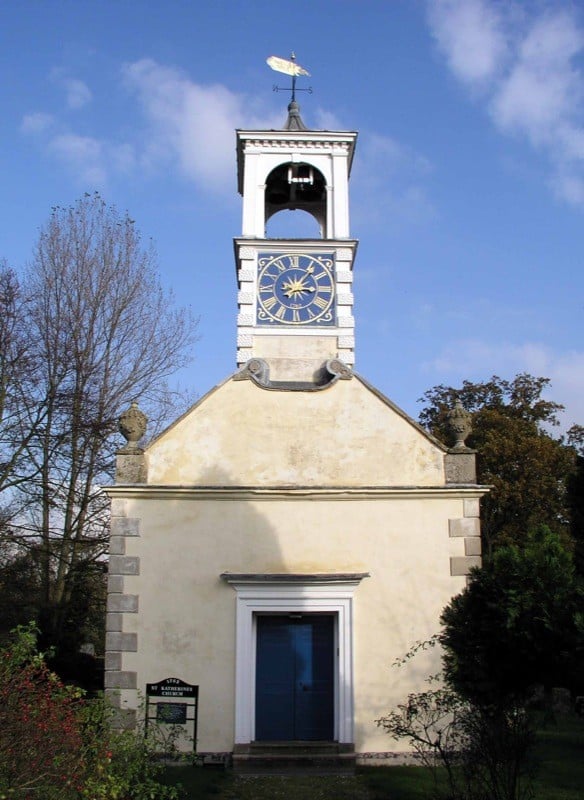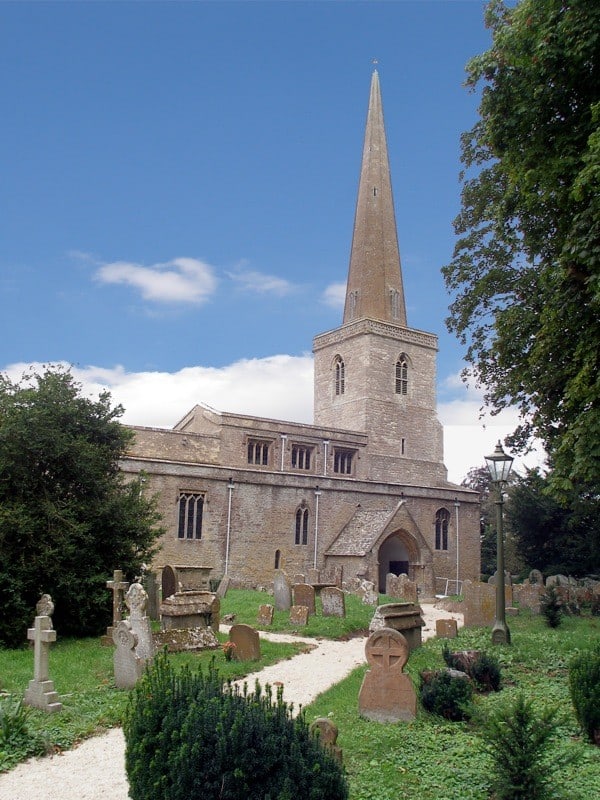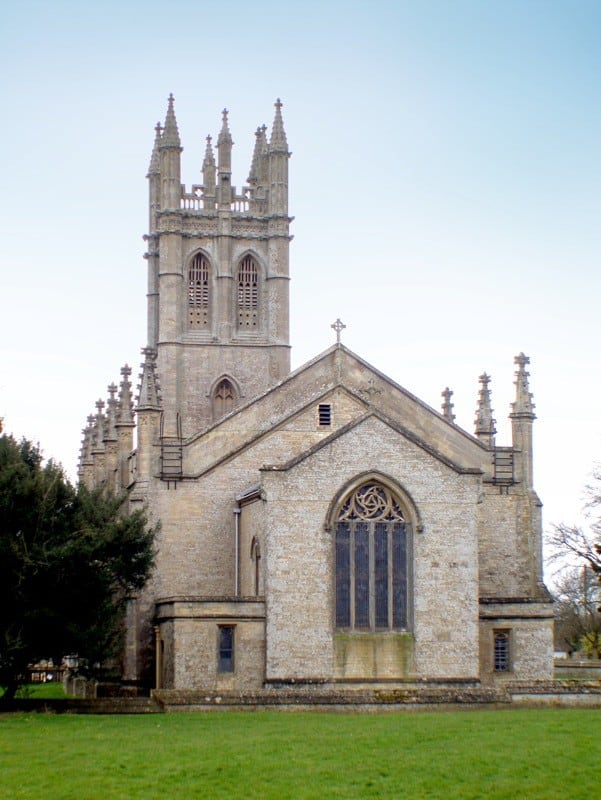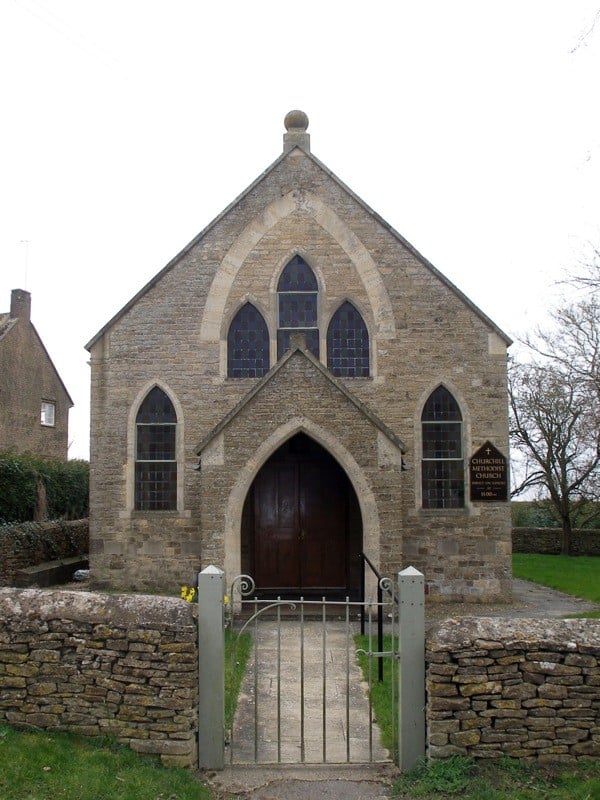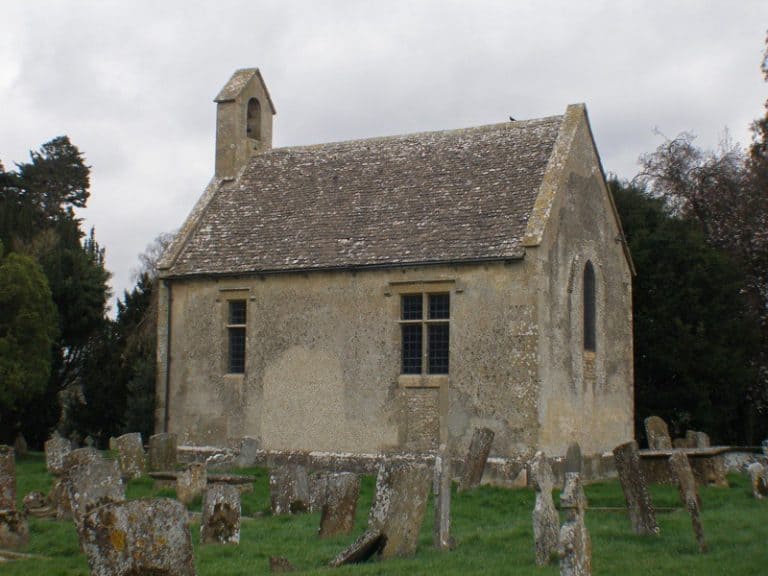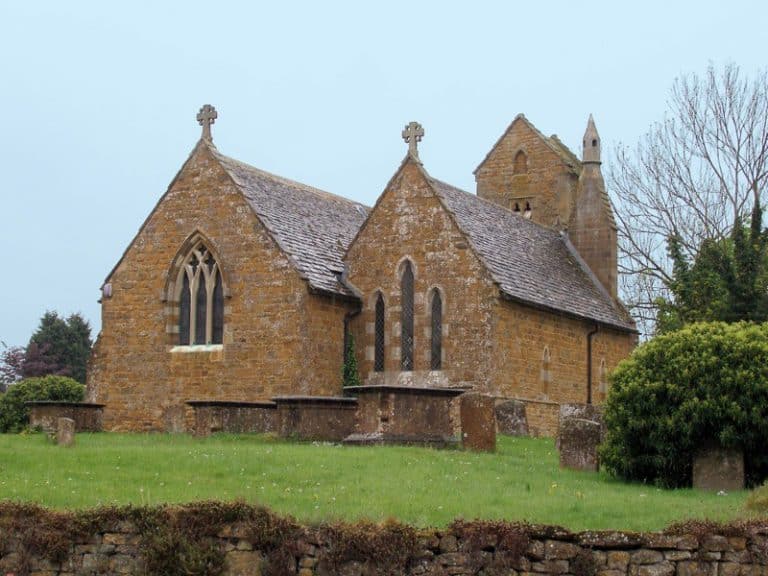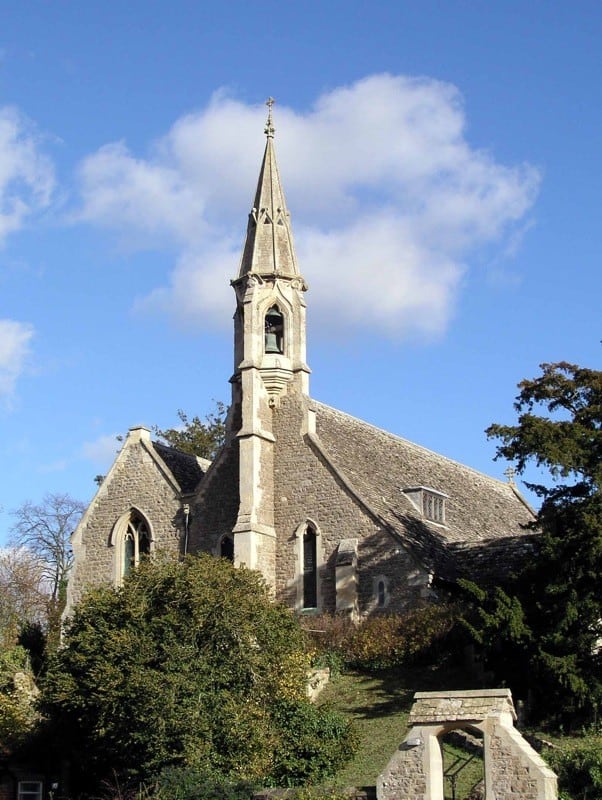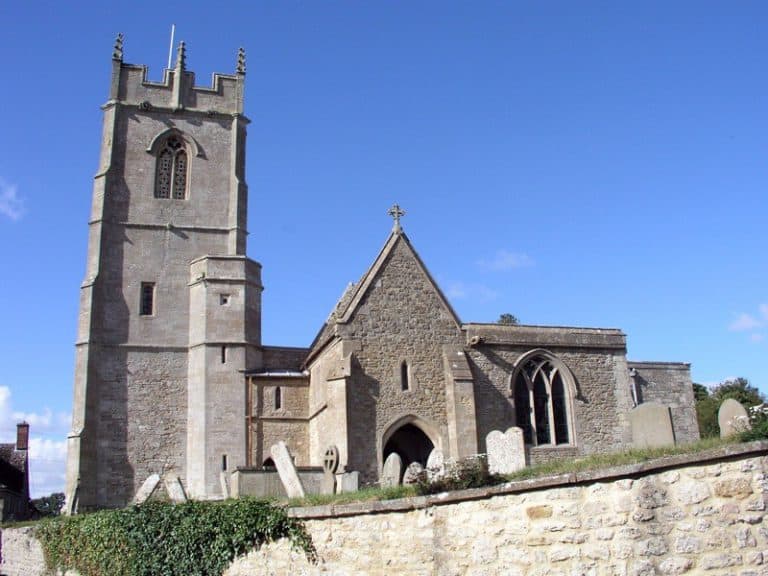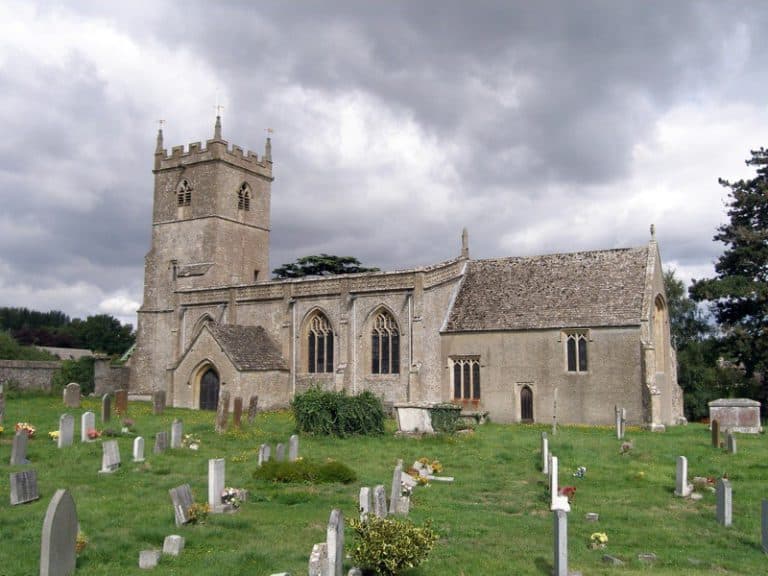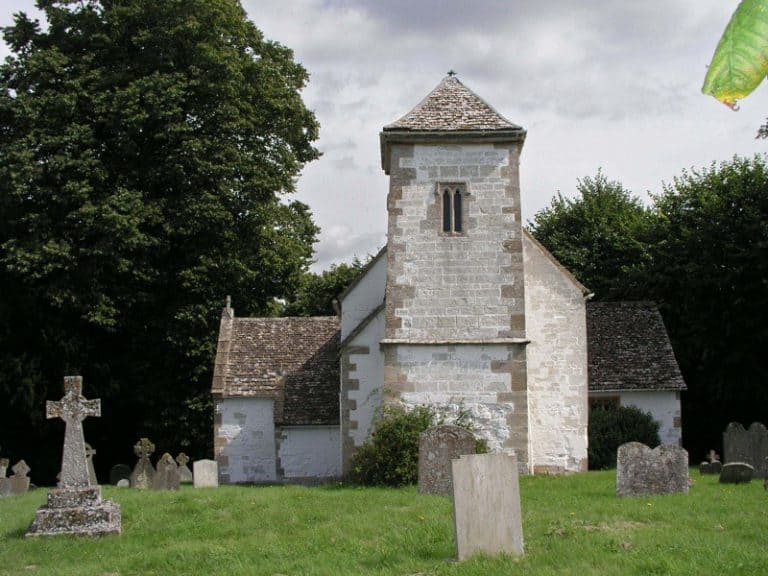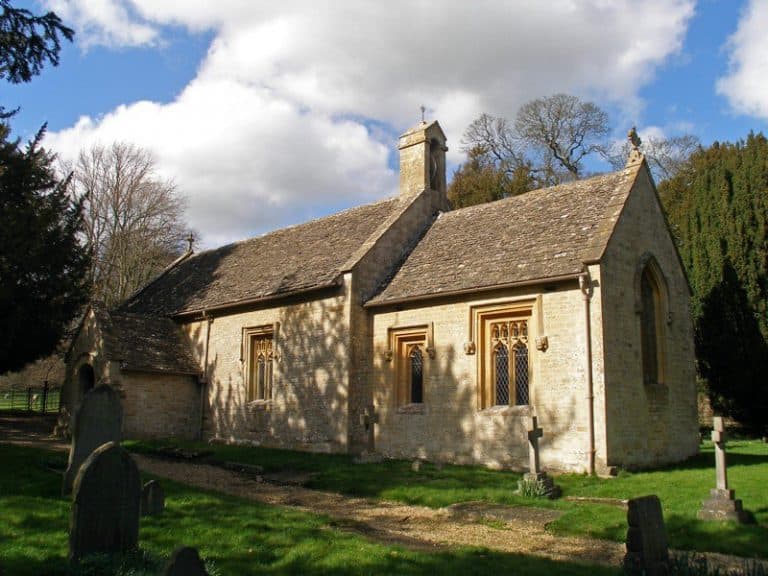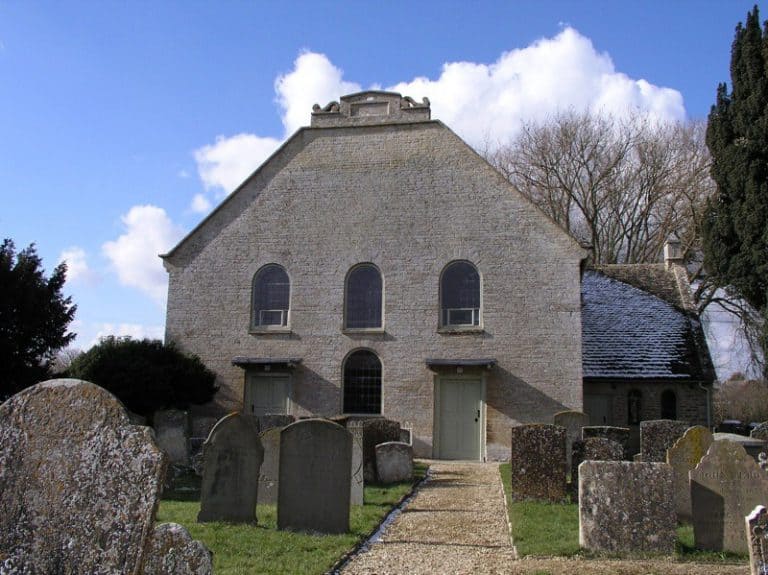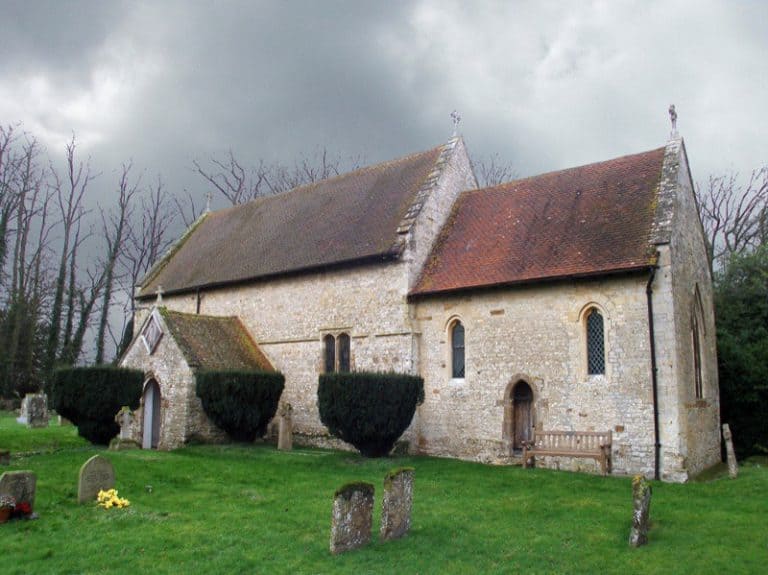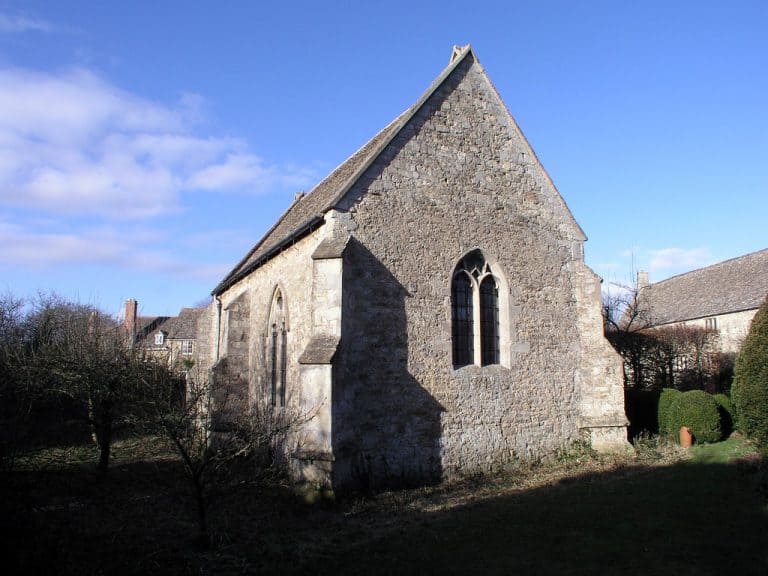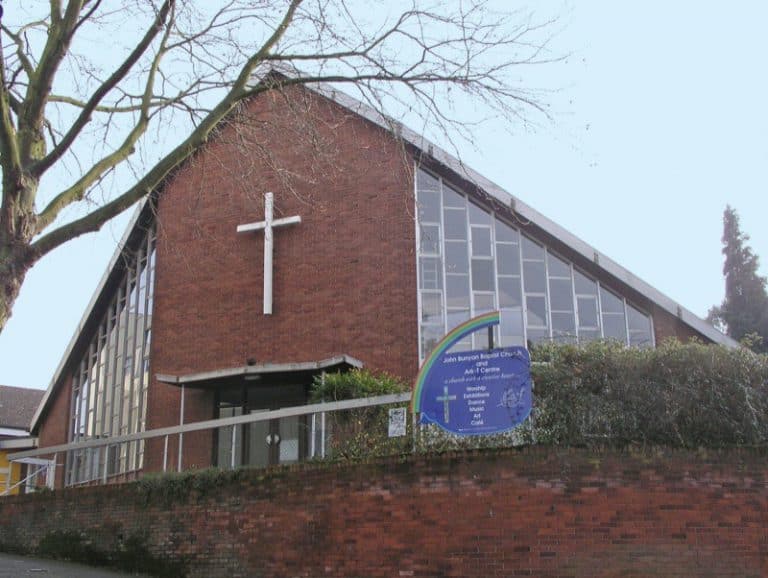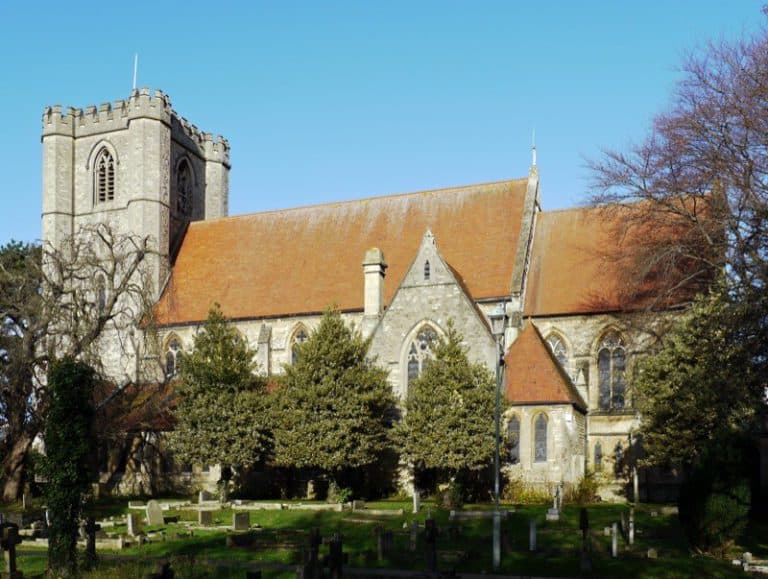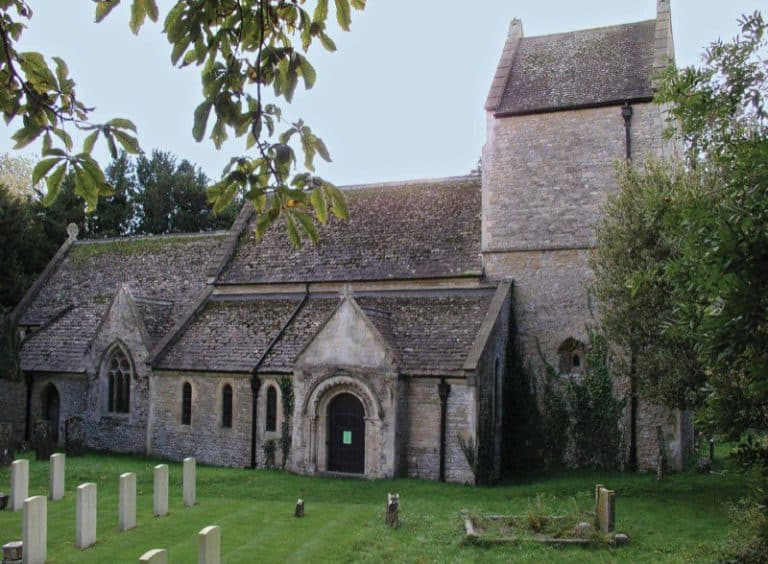
Caversfield : St Laurence
Caversfield
The oldest part of the small Church of England parish church of Saint Laurence is the Saxon ground stage of the bell tower, probably from the 10th century. The nave and chancel were rebuilt late in the 12th century. Early in the 13th century the chancel was remodelled again in the Early English Gothic style with two lancet windows at its east end, and the bell-stage of the tower was either added or rebuilt. The small north and south aisles were added around the same time. Each aisle is linked to the nave by an arcade of two bays, in which the style of the piers is of about AD 1180 but the Early English Gothic style of the arches is of about 1230. The south walls of the church include a lancet window, a Decorated Gothic window from early in the 14th century and a Perpendicular Gothic window from late in the 15th century.
In the 18th century the north and south aisles of St. Laurence church were demolished and the two arcades blocked up. In 1874 the Gothic Revival architect Henry Woodyer restored the chancel, rebuilt the aisles and added a vestry to the east of the north aisle.
In the 18th century the north and south aisles of St. Laurence church were demolished and the two arcades blocked up. In 1874 the Gothic Revival architect Henry Woodyer restored the chancel, rebuilt the aisles and added a vestry to the east of the north aisle.



